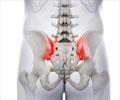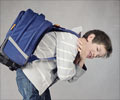Real-world massage therapy could be used as meaningful approach for primary care patients with chronic low back pain.
Highlights
- Chronic lower back pain is very complex and often requires a maintenance-type approach.
- It is the leading cause of disability characterized by persistent back pain and significant physical limitations.
- Massage helps to bring about clinically meaningful improvements in chronic low back pain and could be used as an effective treatment, if patients can afford.
In the U.S, low back pain is the leading cause of years lost to disability. Though many patients recover completely, back pain continues to persist in around one-third of them, and it goes on to develop into a chronic condition in around 15% develop.
Around 31 million people in American experience low-back pain at any given time. Most cases of back pain are mechanical and not caused by serious underlying conditions.
Back pain is one of the most common reasons for absenteeism from work and the second most common reason for visits to the doctor’s office. The annual cost associated with back pain is around $50 billion.
At some given point in their life, around 80% of the population will experience back ache.
"The study can give primary care providers the confidence to tell patients with chronic low back pain to try massage, if the patients can afford to do so," Munk said. Generally, massage is not covered by insurance, Medicaid or Medicare.
The massage therapist designed and provided a series of 10 massages, at no cost to the patient, in a clinical treatment environment, mimicking the experience of people who choose to seek massage therapy in the real world.
Massage therapy helped more than 50% of those who participated in the study who experienced clinically meaningful improvements in their low back pain with disability.
Patients are more likely or less likely to experience clinically meaningful change from massage, depending on the different characteristics they have.
The characteristics include:
- adults in the baby-boom and older generations are more likely to experience clinically meaningful changes
- obese patients experienced significant improvements, but their improvements did not persist due to their weight-related problems
- patients on opioids experienced relief from pain but compared to patients who were not on opioids, they were two times less likely to experience clinically significantchange
Additional research is required to replicate the results of the initial study and to conduct a cost-benefit analysis of massage therapy.
"Massage is an out-of-pocket cost," she said. "Generally, people wonder if it is worth it. Will it pay to provide massage to people for an extended period of time? Will it help avoid back surgeries, for example, that may or may not have great outcomes? These are the types of analyses that we hope will result from this study."
The study, "Real-World Massage Therapy Produces Meaningful Effectiveness Signal for Primary Care Patients with Chronic Low Back Pain: Results of a Repeated Measures Cohort Study," is published online in the journal Pain Medicine.
References
- Niki Munk et al. Real-World Massage Therapy Produces Meaningful Effectiveness Signal for Primary Care Patients with Chronic Low Back Pain: Results of a Repeated Measures Cohort Study. Pain Medicine; (2017) DOI:https://doi.org/10.1093/pm/pnw347
- Back Pain Facts and Statistics - (https://www.acatoday.org/Patients/Health-Wellness-Information/Back-Pain-Facts-and-Statistics)
Source-Medindia
















